Choosing the right platform is crucial for small business owners seeking to grow their customer base and drive sales. An effective email marketing strategy relies on software that is easy to use yet still robust in key functionalities like analytics, automation, and integrations.
When it comes to email marketing software, Sendy and Mailchimp are two of the most well-known options on the market.
In this comprehensive comparison of Sendy vs Mailchimp, we evaluate the two platforms across seven key criteria: market position, ease of use, customization and design options, features and functionality, performance benchmarks, customer support, and pricing models. By the end, you’ll be able to determine the better solution for your needs and budget.
1. Understanding the Basics
Founded in 2015 by Evanson Biwott, Don Okoth, and Malaika Judd, Sendy is a relatively new self-hosted email marketing platform. Despite its young status, Sendy has quickly grown in popularity among small businesses due to its affordable pricing. It currently powers over 80,000 businesses worldwide.
Launched in 2001 by Ben Chestnut and Mark Armstrong, Mailchimp is a well-established leader in the email marketing space. This globally recognized platform now serves over 14 million customers from small businesses to Fortune 100 companies. With over 20 years in the industry, Mailchimp has cemented itself as a top choice for robust email campaigns and marketing automation.
As an established name in the industry, Mailchimp enjoys greater popularity overall. It boasts a highly active Facebook community.
While Mailchimp has the dominant market share, Sendy offers a competitively priced alternative tailored to small business budgets. Both options have carved out solid positions in the email marketing landscape.
2. Features and Functionality
Automation
Sendy

Sendy offers basic automation for email sequences such as welcome series and post-purchase sequences. Users can set up predefined autoresponder workflows to nurture subscriber relationships.
With the Visual Campaign Builder, drag-and-drop campaign sequencing is available for simple automation without coding. However, Sendy lacks robust segmentation options to personalize subscriber outreach. Complex multi-branch automation would need to be configured manually.
Mailchimp
Mailchimp is an all-in-one solution that provides powerful automation through its Marketing CRM tools. Users can create highly targeted segments and complex multi-step workflows to turn subscribers into loyal customers. Options include sign-up forms, abandoned cart flows, customer re-engagement tracks, and more.
With an intuitive drag-and-drop builder and pre-made templates, both simple and advanced automation are user-friendly. Deep segmentation abilities allow granular personalization.
In total, Mailchimp offers far more sophisticated automation functionalities out of the box to support complete subscriber journeys. Sendy caters more to basic needs unless users leverage the API for deeper customization. For robust nurture campaigns, Mailchimp is the leader here.
Winner: Mailchimp
Comparing Sendy to Mailchimp shows that Mailchimp is the clear winner. With its deep segmentation abilities and expansive workflow builder, Mailchimp takes the lead on easy-to-use marketing automation. Granular personalization options empower users to create highly tailored subscriber experiences from simple triggers to intricate multi-branch flows.
Email Templates
Sendy

Sendy comes equipped with basic template design options to create professional email layouts. It includes dozens of free, pre-made templates that cover standard designs for welcome emails, sales announcements, newsletters, and more.
Users can customize colors, fonts, content blocks, and images within templates through the easy drag-and-drop builder. However, adding custom CSS requires manual editing. Overall, the templates work well for simple email campaign needs rather than complex, branded designs.
Mailchimp
Mailchimp provides hundreds of professionally designed email templates to choose from. Options range from basic newsletters to intricate, multi-page brand emails, allowing extensive design personalization out of the box.
The template editor features adjustable columns, image sizing, color pickers, text styling tools, and support for custom code. Users can create email templates from scratch or fully customize existing templates to match brand guidelines.
In total, Mailchimp empowers greater branding, personalization, and design complexity for email campaigns through expansive template design tools. Sendy caters more toward fast template selection rather than extensive customization. For creative freedom in email presentation, Mailchimp leads in functionality.
Winner: Mailchimp
With hundreds of templates and extensive customization abilities, Mailchimp is the winner for email template design and personalization. Users gain immense creative control to craft branded, polished email layouts that reflect business identity and style – exceeding Sendy’s simpler offerings.
Segmentation
Sendy

Sendy provides basic segmentation options to group contacts. Users can create segments based on location, purchase history, email activity, and signup tags. However, complex segmentation logic is not supported.
Sendy only allows combining up to 2 conditions per segment, limiting dynamic lists based on multiple parameters. There is also no predictive modeling to automatically detect the customer lifecycle stage. For the most part, Sendy focuses more on sending emails rather than advanced subscriber organization.
Mailchimp
Mailchimp enables highly advanced subscriber segmentation with its marketing CRM tools. Users can build segments combining multiple data points like demographics, behaviors, product interests, order metrics, and more.
Complex grouping logic lets you segment contacts through predictive intelligence. Tags automatically update based on user engagement. With robust segmentation power combined with personalization abilities in automation, Mailchimp empowers granular 1:1 subscriber targeting.
Winner: Mailchimp
Mailchimp clearly leads when it comes to leveraging customer data for segmentation thanks to its marketing CRM capabilities layered on top of email functionality.
The platform makes it easy to turn raw data into actionable segments that can be activated across email campaigns and cross-channel automation. Sendy trails behind with table-stakes grouping tools. For leveraging subscriber intelligence, Mailchimp is the undisputed leader here.
Analytics
Sendy

Sendy provides baseline email analytics like open, click-through, and bounce rates, as well as detailed tracking reports. Users can view campaign performance summaries to optimize future sending strategies. Data can be segmented by location, link clicks, and activity metrics.
However, custom analytics beyond the pre-built reports are not available. There are also limits in terms of analyzing historical performance across a longer time frame. Those needing deeper statistical insights may find Sendy lacking.
Mailchimp
Mailchimp supplies comprehensive and fully customizable analytics using their built-in Reporting Tools. Users get pre-made reports on opens, clicks, subscriber engagement, social metrics, and more, all filterable by date range, campaign type, segment, and other parameters.
You can also create custom reports combining any available metric with advanced options to analyze performance by region, demographic, integration channel, and other cuts through an intuitive drag-and-drop report builder.
Winner: Mailchimp
Mailchimp comes out ahead for its expansive analytics abilities that not only provide complete out-of-the-box visibility into email campaign performance but also enable custom reporting to uncover subscriber intelligence trends across sophisticated filters.
Sendy analytics cater more to surface-level delivery metrics. For deeper statistical insights, Mailchimp leads the pack.
Unique Features
Sendy

Sendy allows advanced customization through API integration and webhooks. Developers can build custom features leveraging Sendy’s APIs for deeper personalization. Webhooks also enable connecting Sendy to other apps for workflow expansion.
Additionally, Sendy’s self-hosted design gives users control over deliverability factors and infrastructure.
Mailchimp
Mailchimp provides predictive intelligence to target subscribers based on purchase predictors and Lifecycle stage modeling.
Powerful marketing automation creates intricate customer journeys with robust segmentation abilities. E-commerce integrations connect email directly to online stores for personalized, targeted selling.
Winner: Tie
Both Sendy and Mailchimp offer standout capabilities. Sendy excels in developer-friendly infrastructure for advanced customization while Mailchimp leads in intelligent automation features. For users wanting to build onto an extensible email platform, Sendy has the advantage.
Those seeking integrated automation tools would benefit more from Mailchimp. It’s a split decision based on business needs and technical requirements.
3. Ease of Use
Sendy

Sendy offers a straightforward user interface focused primarily on email campaign functionality rather than extensive customization. The dashboard allows easy access to contact management, template selection, and sending options through a clean, no-frills design.
With limited tools aimed at simplicity, the UI is easier for email marketing beginners to start with compared to more robust platforms. However, those wanting to leverage automation and analytics may find Sendy lacking in depth.
Mailchimp

Mailchimp provides a more expansive but still user-friendly interface by balancing powerful tools with intuitive navigation. The dashboard neatly organizes complex functionality like templates, automation, and reports using a clean, appealing visual design. Extensive help articles and product tours also simplify the learning curve.
While the expansive features may overwhelm total beginners at first, Mailchimp’s thoughtful UI streamlining allows both simple and sophisticated email marketers to optimize their customer journeys.
Winner: Mailchimp
Mailchimp excels at making a wide suite of email functionality accessible through smart UI organization and education. Guidance resources combined with visual simplicity help new users gradually ramp up to advanced features. Sendy’s simpler interface gets users sending quicker but cannot support extensive customer journey growth over time like Mailchimp.
4. Email Deliverability
Sendy

As a self-hosted platform, Sendy gives users more control over email infrastructure to optimize deliverability. Users can choose their own server (Apache server, Linux server, or Amazon EC2 server), IP, and domain to maintain their reputation over time rather than relying on shared resources.
However, extensive deliverability management requires technical expertise. Sendy also lacks advanced authentication protocols like DMARC. For more basic senders, deliverability may rely more on the user’s configurations.
Mailchimp
With dedicated infrastructure supporting billions of emails per month, Mailchimp is equipped to get emails reliably delivered at high volumes. Features like domain authentication, advanced spam testing, and deliverability monitoring help increase inbox placement.
Mailchimp also optimizes email content using machine learning to drive engagement. Their deliverability team handles ISP outreach and platform optimization so users don’t have to.
Winner: Mailchimp
For most use cases, Mailchimp’s integrated deliverability capabilities require less heavy lifting from users to increase inbox placement. Sendy offers more control which advanced senders may prefer, but requires more technical skill. Those wanting a deliverability partner to manage infrastructure complexities are better served by Mailchimp.
5. Customer Support and Community
Sendy
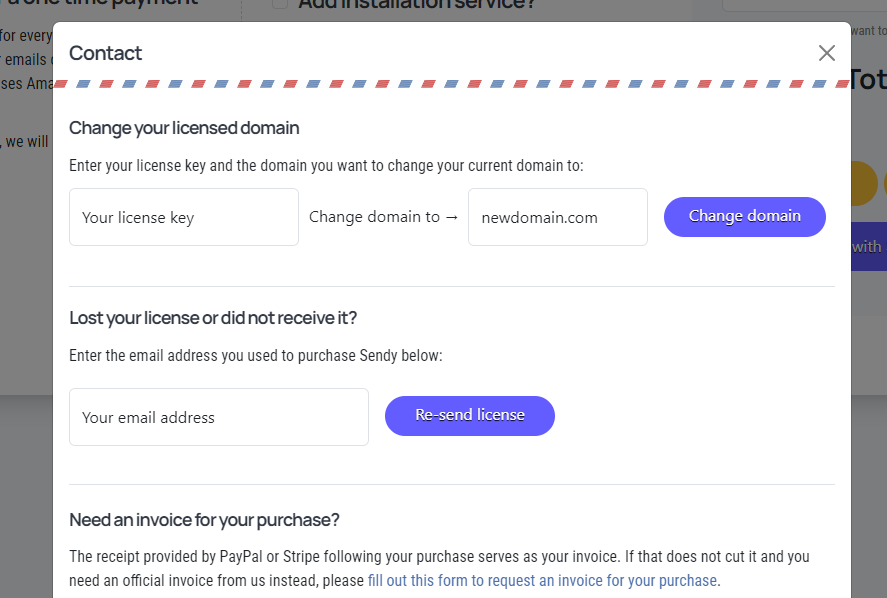
Sendy offers email-based customer support for technical issues and assistance with core platform functionality. As a small company, they provide responsive one-on-one answers but lack the real-time options of larger providers.
Mailchimp
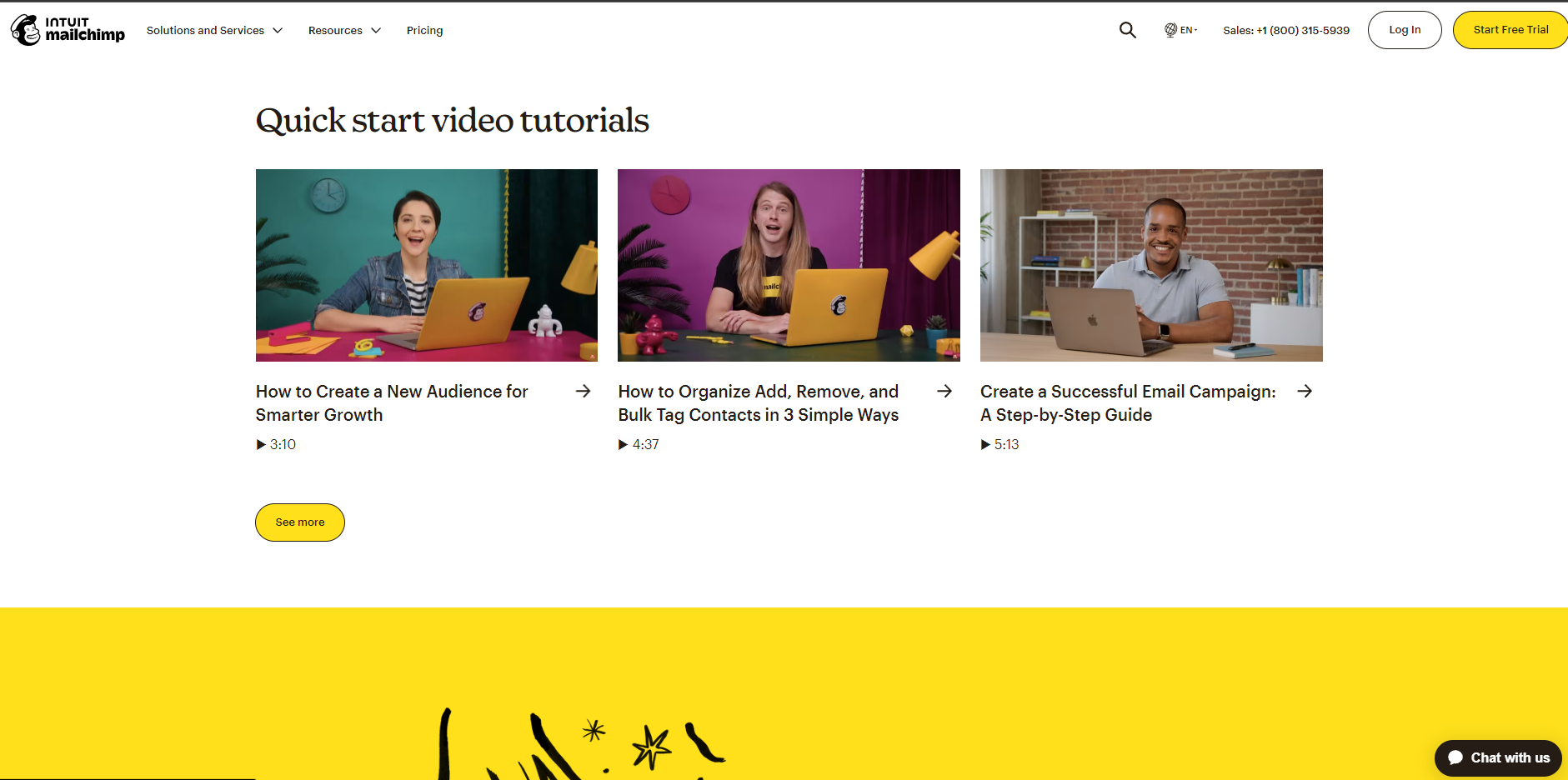
Mailchimp provides 24/7 customer support across multiple channels including phone, email, live chat, social media, and an online ticket system. Users have real-time access to reps for assistance from onboarding advice to troubleshooting delivery issues.
An extensive knowledge base and community forum offer self-service answers too. As an established brand, Mailchimp also enjoys meetups and conferences globally.
Winner: Mailchimp
Mailchimp’s wide range of customer support channels, populated knowledge base, and global community give users more readily available assistance on email marketing topics. Sendy provides email-based assistance but cannot match the real-time, omnichannel help center scaled to serve millions of customers worldwide.
6. Integrations
Sendy

Sendy offers basic integrations with third-party tools like email plugins, webinar software, and messaging apps via Zapier to add key features to send emails more efficiently. Users can connect Sendy to common tools like WordPress, Stripe, and Slack to move data between apps.
However, complex multi-step automation requiring deeper bi-directional integration is not supported out of the box. Developers can leverage Sendy’s APIs to build custom integrations and connect database solutions. However, for non-technical users, options are more limited overall.
Mailchimp
Mailchimp provides over 800 native integrations with marketing, e-commerce, CRM, and other business systems. Users can activate integrations like Facebook, Shopify, and Salesforce through a few clicks to sync data flows across tools.
Robust bi-directional functionality even allows updating records in external apps from Mailchimp campaigns. The platform also offers Zapier, API, and webhook options for further connections.
Winner: Mailchimp
With hundreds of turnkey integrations spanning essential business technologies, Mailchimp is the clear leader in connectivity. Even non-technical users can easily Centralize data and activate omnichannel campaigns leveraging Mailchimp’s native app ecosystem support. Sendy requires manual efforts or developer skills for robust functionality between tools.
7. Pricing
Sendy
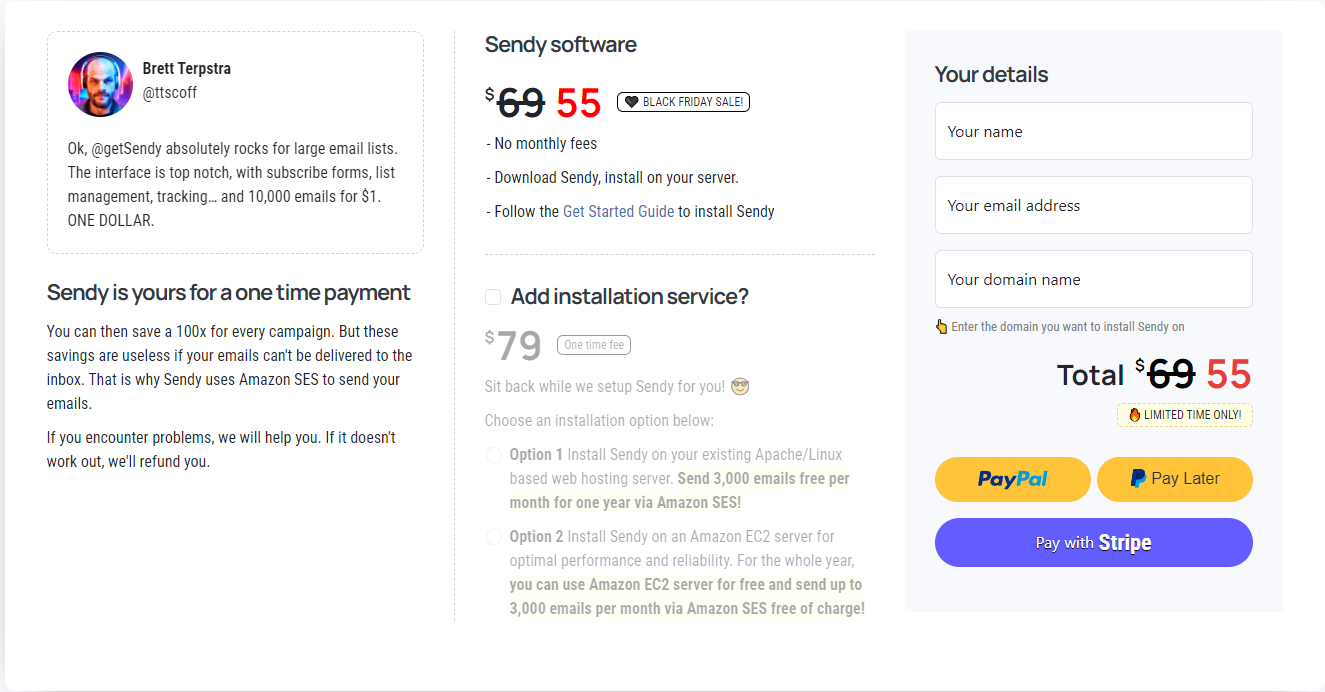
Sendy offers pay-as-you-go pricing starting at $55 per domain for up to 15,000 contacts and unlimited emails.
Custom enterprise quotes are provided for large lists above 100,000 contacts. As a self-hosted platform, users must factor in additional costs for email servers, domains, and IPs as well. However, overall Sendy presents cost-efficient Email rates for SMBs.
Mailchimp
Mailchimp has a free plan and 3 paid tiers: Essentials at $13/month, Standard at $20/month, and Premium at $350/month billed annually.
Lower tiers are suitable for small businesses. The Premium plan adds powerful enterprise features like journey builder, workflow automation, and advanced analytics.
Mailchimp’s free plan lets you send 1,000 emails per month with basic automation for your email marketing campaigns. Overall, Mailchimp offers cost-effective plans ideal for budget-conscious users.
Winner: Sendy
For budget-conscious small businesses under 15k contacts, Sendy clearly provides more affordable high-volume email-sending capabilities vs Mailchimp’s premium model that factors robust feature depth on top of basic delivery. Sendy pricing aligns better with basic email marketing needs while Mailchimp excels in maximizing customer journeys through data and automation.
8. Reviews and Reputation
Sendy
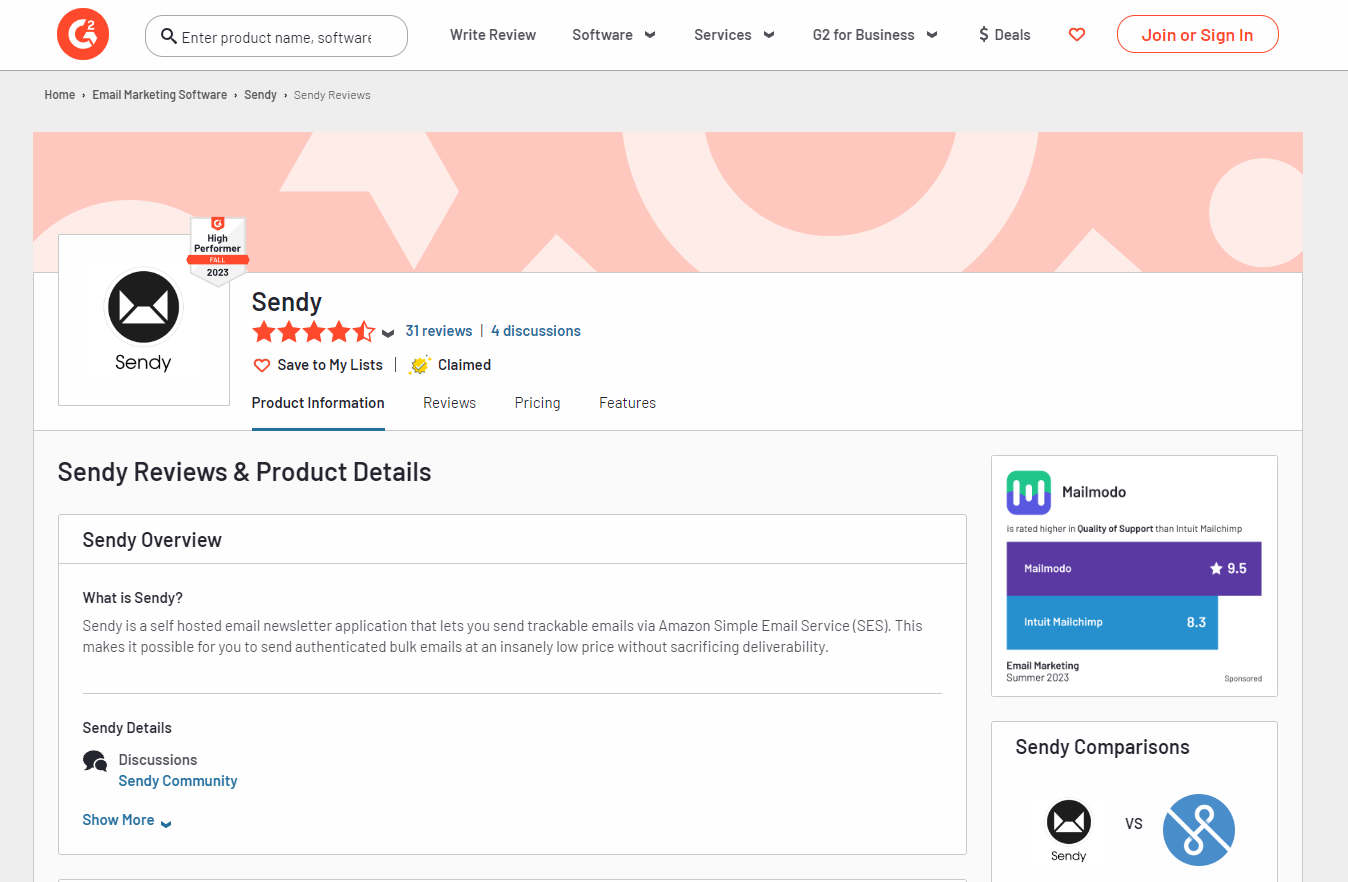
Sendy earns positive reviews for its affordability and easy learning curve. Users praise the straightforward Sendy installation and UI, as well as the lower costs compared to Mailchimp, especially when using Amazon SES to send emails free of charge.
However, some users felt deliverability was not as reliable for their needs or wanted more customization options.
With a 4.4/5 average across various software review sites like G2, Sendy scores well for basic email marketing needs but lacks features for more advanced strategies.
Mailchimp
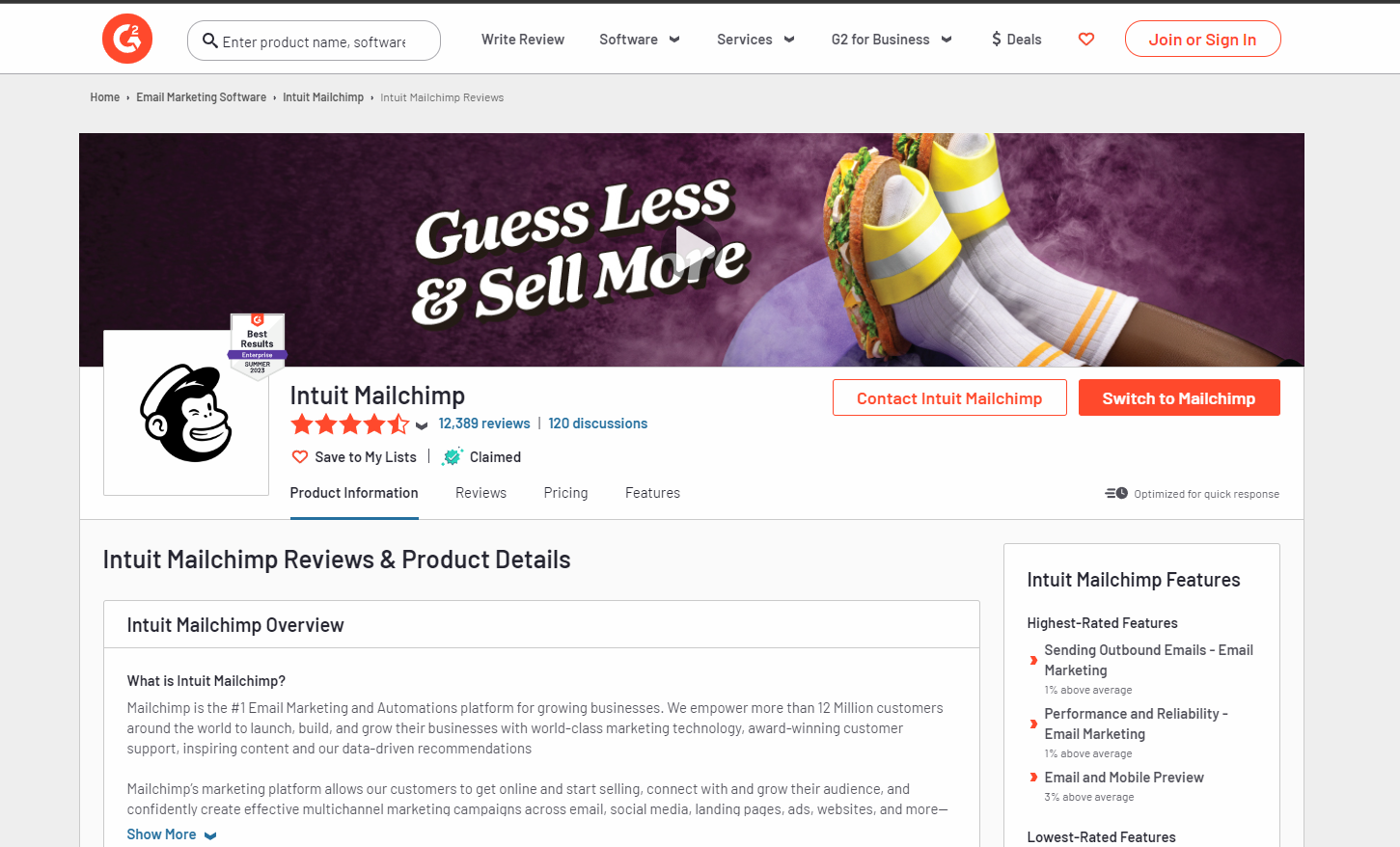
With over 600k global users, Mailchimp enjoys a trusted industry reputation as a leader in the email marketing space. The platform averages 4.5/5 stars praised for its extensive features, automation tools, and intuitive interface.
Some disadvantages cited include the higher pricing and complexity for smaller businesses. But overall Mailchimp provides exceptional capabilities for customizable email campaigns albeit at a premium cost.
Winner: Mailchimp
While Sendy offers streamlined functionality at competitive rates, established leader Mailchimp edges them out in overall reviews and market reputation through its unparalleled feature set and years of excellence perfecting email marketing best practices. For advanced needs, Mailchimp is the go-to choice.
9. FAQ’s
Sendy FAQs
- What email functionality does Sendy offer?
Sendy focuses mostly on email campaign creation, contact management, basic automation, and analytics. It covers email essentials but not advanced features. - Does Sendy integrate with other software?
Sendy offers basic integrations for connecting to web apps via Zapier. Developers can leverage the APIs for deeper integrations. But out-of-the-box options are limited. - How much does Sendy cost?
Sendy starts at $55 for up to 15,000 contacts.
Mailchimp FAQs
- What additional capabilities does Mailchimp offer beyond Sendy?
Mailchimp provides extensive features like marketing automation, landing pages, more integrations, CRM, and superior analytics. The focus is comprehensive campaign functionality. - Is Mailchimp easy to use?
Despite wide feature depth, Mailchimp offers an intuitive, clean interface. Extensive educational resources also simplify the learning curve for both basic and advanced features. - Does Mailchimp have a free plan?
Yes, Mailchimp offers a free forecast that supports up to 2,000 contacts and limited emails per month. Paid plans start at the Essentials tier $9.99/month with up to 50,000 emails.
Final Thoughts
Choose Sendy if…
With its affordability and ease of use, Sendy is ideal for small businesses wanting to set up basic email marketing capabilities without high costs or complexity. If you just need straightforward email campaign creation and analytics without advanced features, Sendy provides strong ROI. Solo entrepreneurs and marketing teams that prefer simple interfaces will find Sendy fits their budget and needs well.
Choose Mailchimp if…
For growing businesses wanting to maximize customer journeys through automation and customization, Mailchimp leads the pack. The platform shines if you want to leverage sophisticated segmentation, mobile optimization, analytics, and integrated ecosystems to boost marketing performance. Teams that prioritize maximizing subscriber experiences through tailored content, personalized behavior tracking, and contextual delivery will thrive with Mailchimp.
You may also be interested in checking out some Mailchimp alternatives to help with the evaluation process.
